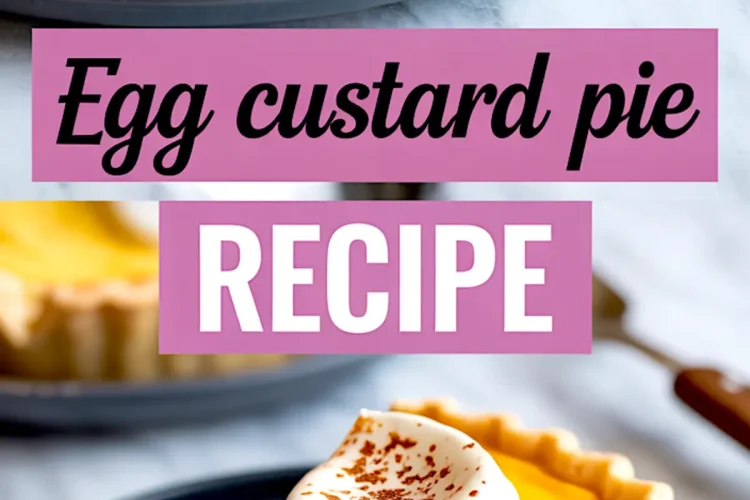If you’ve ever stared down a dozen eggs and a pie crust and wondered what kind of comfort could come from so little, this Egg Custard Pie recipe has your answer.
This dessert brings together basic pantry ingredients eggs, milk, sugar, and vanilla—and turns them into something smooth, warm, and satisfying. You’ll learn how to create a custard pie that bakes gently into a soft, wobbly center with a lightly browned top and a hint of spice.

Why Egg Custard Pie Is Still Worth Making
Some pies shout with flavor. This one hums. Egg custard pie doesn’t need layers or swirls or crunch to win you over. It carries the weight of tradition with nothing more than a soft texture and a whisper of nutmeg.
I’ve baked this for holidays, Sunday dinners, and once for a friend who lost her grandmother. It reminded her of the pies from church potlucks gentle, humble, and quietly sweet.
You don’t need skill so much as patience. The right oven temp and a careful eye on texture matter more than any special technique. You’ll find the center of this pie still slightly jiggly when you pull it out—and that’s exactly when it’s done.
Ingredients and What They Do
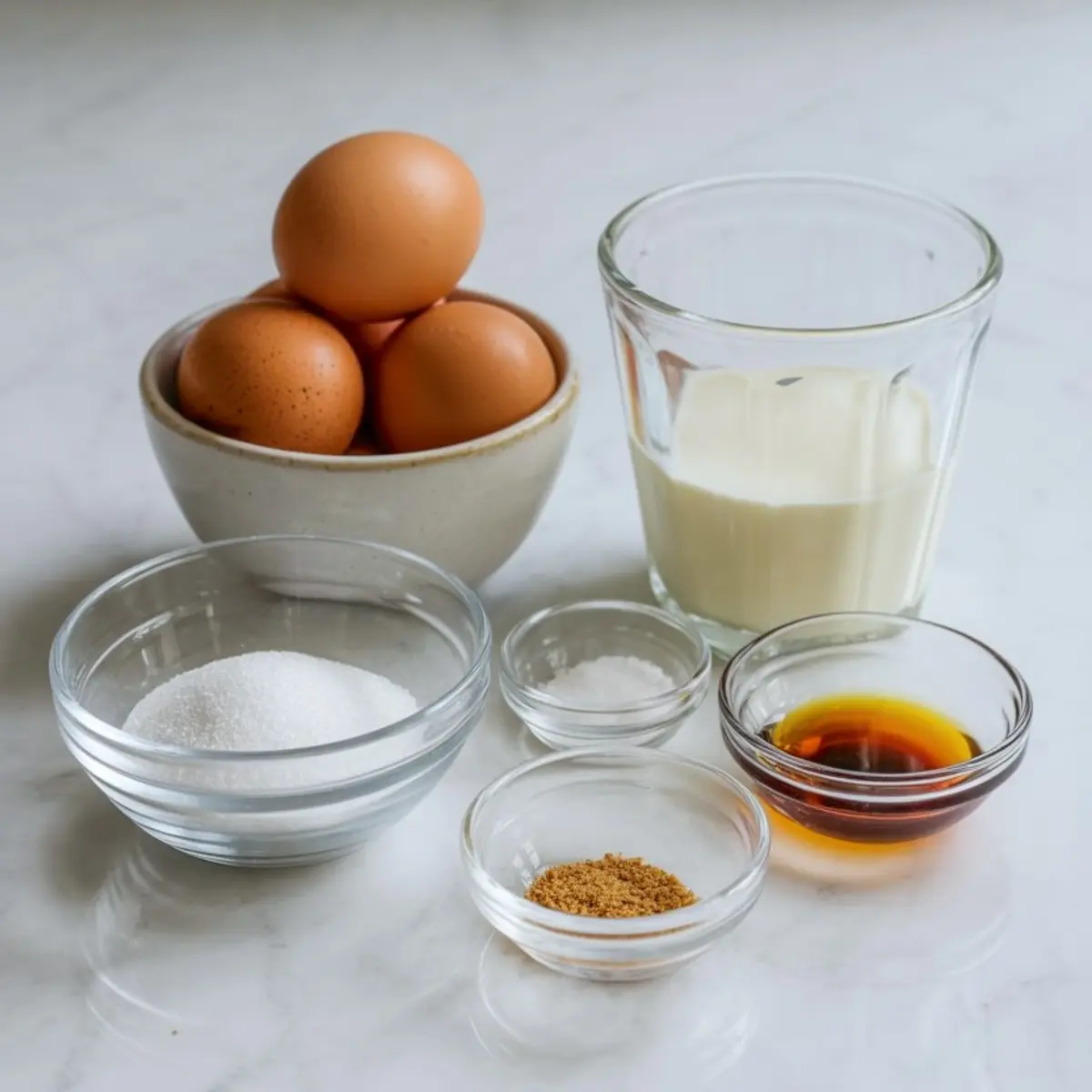
The eggs give structure. The sugar brings just enough sweetness without tipping into dessert overload. Whole milk creates a custard that sets without going rubbery. Vanilla and nutmeg round it out with a soft edge.
The filling isn’t meant to sit tall or flashy. It should nestle gently into the pie shell and bake slowly. I use my basic pie crust recipe because it holds well against the soft custard without overpowering it.
Baking Tips for Smooth Custard Pie Texture

Don’t rush the baking time. A higher temperature will make the custard puff and crack, or curdle slightly. Bake it at 350°F and don’t be tempted to go higher.
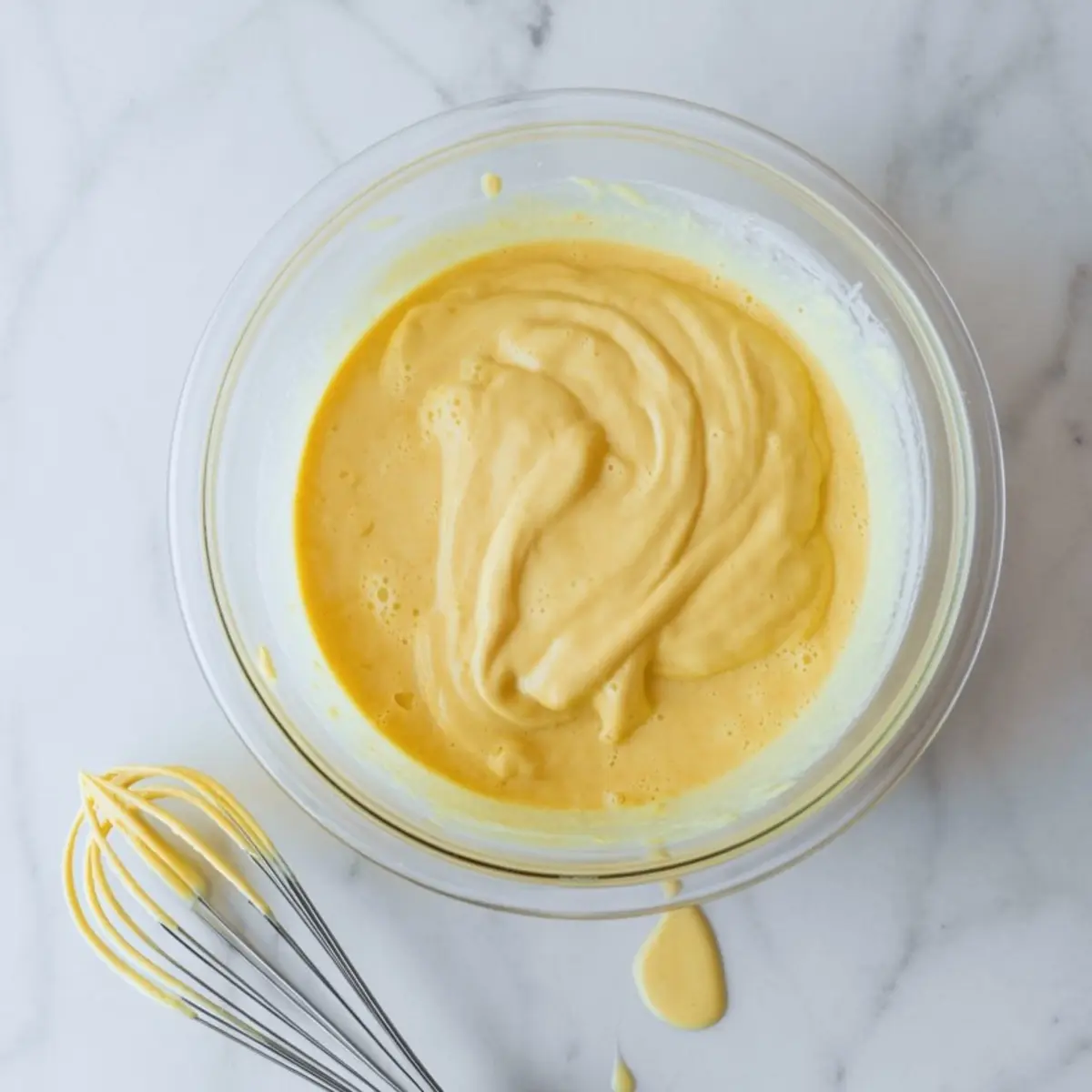
I always place the pie on a baking sheet. It catches any spill and keeps the heat even underneath.
Once you see the outer edges set and the center barely tremble when you nudge the pan, remove it. Letting it cool fully is essential. Rushing that step will give you weeping custard and soggy crust.
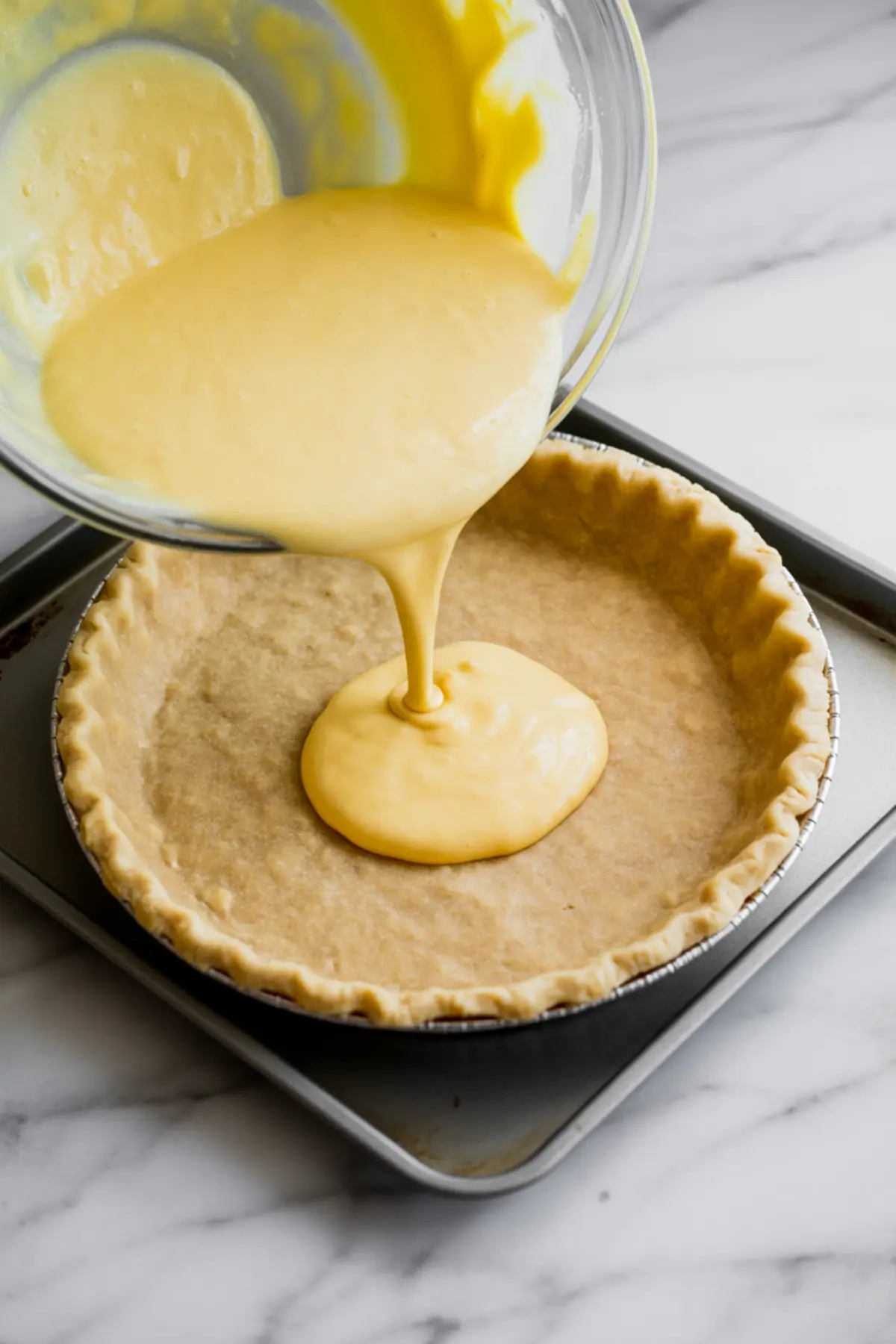
Comparison: Whole Milk vs. Evaporated Milk in Custard Pie
I’ve tried both. Whole milk gives the cleanest set—smooth and mild with a texture that melts in your mouth.
Evaporated milk can add richness, but it also dulls the freshness and adds a slightly caramelized edge. It can overpower the vanilla and feel too heavy.
In my notes, whole milk wins for this style. It stays true to the original intention of the dish.
Serving Notes and Make-Ahead Tips
This pie needs at least two hours in the fridge before you cut into it. The chill allows the custard to firm up enough to slice without oozing.
It tastes best cold or slightly cool. I often top each slice with a spoon of whipped cream and a dust of cinnamon. The texture holds up well on the second and third day.
Serve it next to something brighter—like this apple pie recipe if you’re offering a pie spread. Egg custard offers calm where apple brings punch.
Old-Fashioned Custard with Modern Structure
This isn’t a fussy dessert, but it does ask you to slow down. You whisk by hand. You watch the oven. You test for the wobble.
That’s how you know the custard is ready—not from a timer, but from the way it moves. It’s a pie that teaches you to trust your eyes.
If you’re looking to add another traditional recipe to your rotation, the pumpkin pie recipe shares similar roots. Both come from the same place—simplicity, warmth, and a few well-used ingredients.
More Ideas if You Love Egg Custard Pie
The baked egg custard filling also works beautifully in tart form. An egg custard tart recipe keeps the flavor but offers a crisp bite from a thinner crust.
If you prefer less crust, try it crustless. A crustless custard pie gives the same custard finish with a little less prep.
Some people like to riff on it with fruit, like peach custard pie or even spiced variations. But the base remains the same: eggs, milk, sugar, and heat.
Save This Pie and Tell Me How It Went
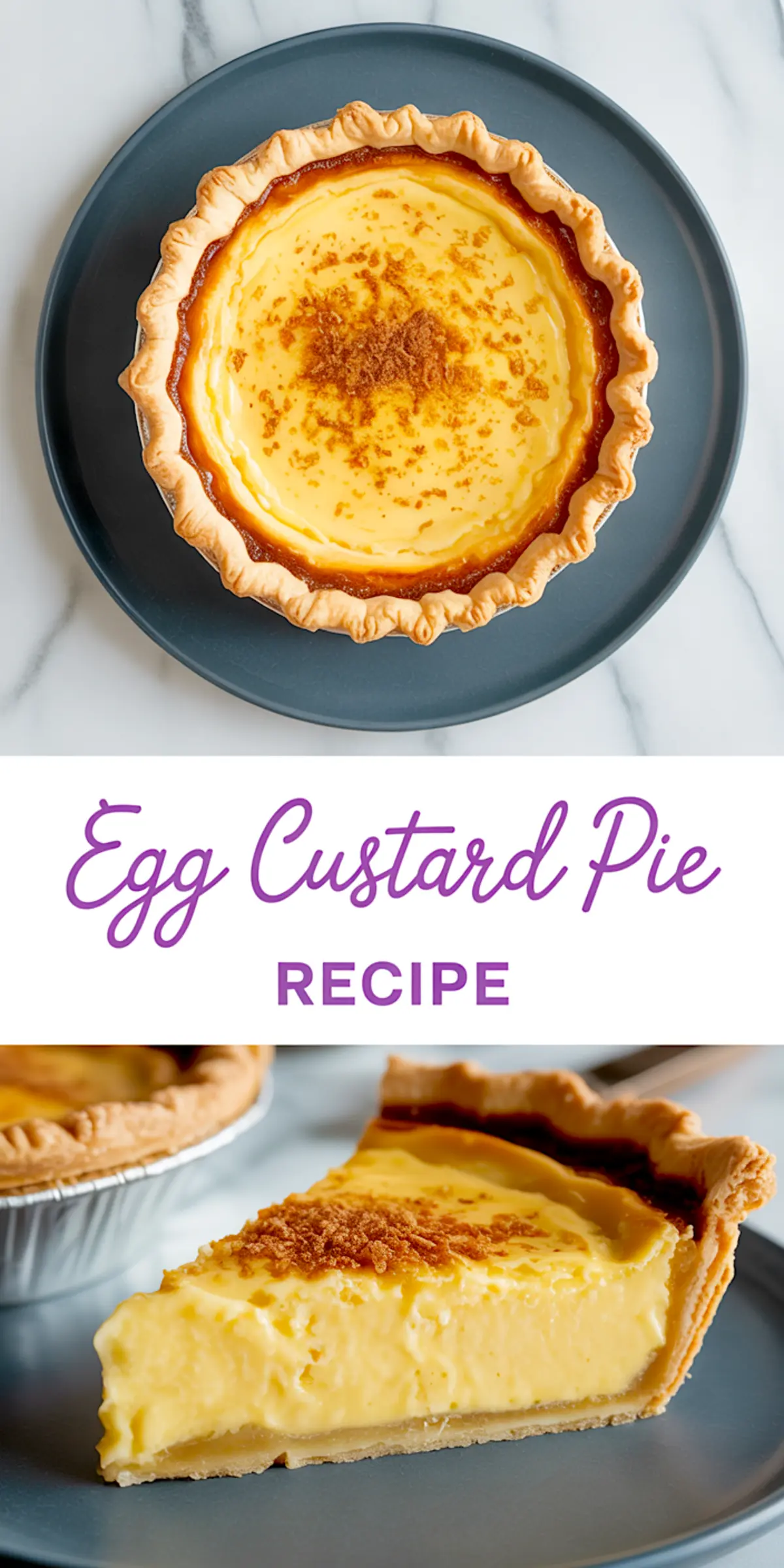
You can pin this recipe now to your Pie Recipes board so you have it handy next time you need something calm and classic.
And if you make it, I’d love to hear from you. Drop a note in the comments—tell me how it turned out, if you added your own twist, or if it brought back a memory.
Egg Custard Pie Recipe

A traditional egg custard pie features a smooth, creamy filling made from simple ingredients like eggs, milk, and sugar. The custard is poured into an unbaked pie shell and baked until set, creating a lightly sweet dessert with a delicate texture. A dash of nutmeg on top adds a warm, nostalgic flavor.
Ingredients
- 1 unbaked 9-inch pie crust
- 3 large eggs
- ¾ cup granulated sugar
- ¼ teaspoon salt
- 2 ½ cups whole milk
- 1 teaspoon pure vanilla extract
- ¼ teaspoon ground nutmeg
- Additional ground nutmeg or cinnamon, for topping (optional)
- Fresh whipped cream, for serving (optional)
Instructions
- PREHEAT AND PREP: Preheat the oven to 350°F (175°C). Place the unbaked pie crust into a 9-inch pie dish and crimp the edges. Set the pie dish on a baking sheet to catch any overflow while baking.
- MAKE THE CUSTARD: In a large mixing bowl, whisk the eggs, granulated sugar, and salt until the mixture is smooth and evenly combined. Gradually whisk in the milk, then stir in the vanilla extract and ground nutmeg.
- FILL THE PIE SHELL: Slowly pour the custard mixture into the unbaked pie crust. Pour carefully to avoid spills or bubbles, allowing the filling to settle evenly.
- BAKE: Place the baking sheet with the pie into the preheated oven. Bake for 45 to 55 minutes, or until the center is just set but still slightly wobbly. A knife inserted near the center should come out mostly clean.
- COOL AND SERVE: Remove the pie from the oven and let it cool completely on a wire rack. Once cooled, transfer to the refrigerator and chill for at least 2 hours to allow the custard to set fully. Before serving, optionally top with a light sprinkle of nutmeg or cinnamon and a dollop of whipped cream.
Notes
For best texture, use whole milk. Do not overbake—the custard should have a slight jiggle in the center when finished baking. Store leftovers in the refrigerator for up to 3 days.
Nutrition Information
Yield
8Serving Size
1Amount Per Serving Calories 250Total Fat 10gSaturated Fat 4gTrans Fat 0gUnsaturated Fat 5gCholesterol 78mgSodium 216mgCarbohydrates 34gFiber 1gSugar 24gProtein 6g

